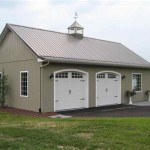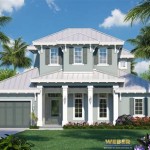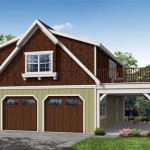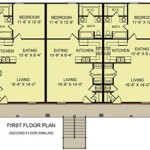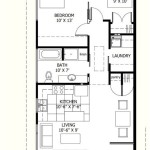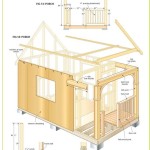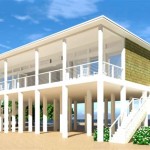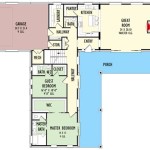Two Bedroom Two Bath Home Plans: Optimizing Space and Functionality
Two-bedroom, two-bathroom house plans represent a highly sought-after housing configuration. They bridge the gap between smaller one-bedroom options and larger multi-bedroom family homes, offering a comfortable balance of space, privacy, and affordability. These plans appeal to a diverse demographic, including young professionals, couples, small families, and retirees seeking to downsize without sacrificing essential amenities. The popularity of this type of home design stems from its inherent versatility and adaptability to various lifestyle needs.
The key to a successful two-bedroom, two-bathroom house plan lies in efficient space utilization. Maximizing living areas, ensuring well-proportioned bedrooms, and incorporating functional storage solutions are all crucial elements. Thoughtful design considerations during the planning phase can significantly enhance the overall livability and value of the home. This article will explore the multifaceted aspects of two-bedroom, two-bath home plans, focusing on key considerations for layout, functionality, and design choices.
Key Considerations for Layout and Space Planning
The layout of a two-bedroom, two-bath home is paramount to its success. It dictates the flow of movement throughout the house, the arrangement of living spaces, and the overall feeling of spaciousness. Several layout options exist, each with its own advantages and disadvantages depending on the specific needs and preferences of the homeowner. Common configurations include ranch-style layouts, two-story designs, and variations that prioritize open-concept living.
Open-concept living, combining the living room, dining area, and kitchen into a single, unified space, is a popular choice for maximizing perceived space. This arrangement promotes social interaction and creates a more expansive feel, particularly beneficial in smaller homes. However, careful consideration must be given to zoning and defining separate areas within the open space. Furniture placement, changes in flooring, and the use of area rugs can help delineate the different zones without sacrificing the overall sense of openness.
In contrast, more traditional layouts separate the living spaces into distinct rooms. This offers greater privacy and noise control, appealing to those who prefer a more structured and defined living environment. This approach may be advantageous for individuals who work from home or require a quiet space for relaxation. The downside of traditional layouts is that they can sometimes feel smaller and less connected compared to their open-concept counterparts.
Bedroom placement is another critical aspect of layout planning. Ideally, the master bedroom should be situated away from the main living area to provide a tranquil retreat. Locating the second bedroom near the second bathroom provides convenience and privacy for guests or family members. Considerations should also be given to noise transmission between rooms, particularly if one bedroom is used as a home office or by a light sleeper. Soundproofing measures, such as insulation and solid-core doors, can help mitigate noise issues.
Hallways and circulation space should be minimized to maximize usable square footage. Long, narrow hallways are inefficient and detract from the overall living area. A well-designed layout integrates circulation pathways seamlessly into the living spaces, avoiding wasted space and creating a more fluid flow. Every square foot should contribute to functionality and aesthetics.
Finally, consider the orientation of the house on the lot. Maximizing natural light exposure can significantly enhance the livability of the home and reduce energy consumption. Southern exposure is generally desirable for living areas, while east-facing bedrooms can benefit from morning sunlight. Proper window placement and the incorporation of skylights can further enhance natural light levels throughout the house. Landscaping can also play a role in optimizing sunlight exposure and providing shade during the hottest parts of the day.
Functionality: Prioritizing Practicality and Convenience
Beyond the layout, functionality is a crucial consideration in two-bedroom, two-bath home plans. This encompasses the practical aspects of daily living, including storage solutions, kitchen efficiency, bathroom amenities, and accessibility features. A well-designed home seamlessly integrates these functional elements to enhance comfort and convenience for the occupants.
Storage is often a limiting factor in smaller homes. Incorporating ample and well-organized storage solutions is essential for maximizing space and minimizing clutter. Built-in shelving, closet organizers, and under-bed storage can significantly increase storage capacity without taking up valuable floor space. Utilizing vertical space with tall cabinets and shelving units can also be an effective way to maximize storage.
The kitchen is the heart of the home, and its functionality is paramount. A well-designed kitchen optimizes workflow and minimizes wasted movement. The work triangle, formed by the sink, refrigerator, and stove, should be compact and efficient. Ample counter space is essential for food preparation, and a well-organized pantry can help keep the kitchen clutter-free. Consider incorporating features such as pull-out shelves, spice racks, and utensil organizers to maximize storage and accessibility.
Bathrooms should be designed for both functionality and comfort. Adequate counter space, well-placed lighting, and efficient ventilation are essential. Consider incorporating features such as walk-in showers, grab bars, and comfort-height toilets to enhance accessibility and safety. The choice of fixtures and finishes can also significantly impact the overall functionality and aesthetics of the bathroom.
Accessibility features should be considered, even if not immediately required. Wider doorways, lever handles, and roll-in showers can make the home more accessible for individuals with mobility limitations. Incorporating these features early in the design process can make the home more versatile and adaptable to changing needs over time. Universal design principles aim to create homes that are usable by people of all ages and abilities.
Laundry facilities should be conveniently located and efficiently designed. A dedicated laundry room can provide ample space for washing, drying, and folding clothes. Alternatively, a laundry closet can be a space-saving option for smaller homes. Well-placed shelving and storage can help keep the laundry area organized and functional. Consider incorporating features such as a folding counter and a utility sink.
Finally, consider the integration of technology into the home. Smart home features, such as automated lighting, temperature control, and security systems, can enhance convenience and energy efficiency. Pre-wiring for these features during the construction phase can make it easier to integrate them later on. Adequate electrical outlets and data ports are also essential for powering electronic devices and staying connected.
Design Choices: Aesthetics and Personalization
While layout and functionality are critical, the design choices made in a two-bedroom, two-bath home plan significantly impact its aesthetics and overall appeal. These choices encompass a wide range of elements, including architectural style, interior finishes, color palettes, and decorative accents. A well-executed design seamlessly integrates these elements to create a cohesive and personalized living space.
Architectural style is a fundamental design choice that sets the tone for the entire home. Common architectural styles for two-bedroom homes include ranch, contemporary, farmhouse, and Craftsman. Each style has its own unique characteristics and features. Ranch-style homes are typically single-story with a low-pitched roof and an emphasis on horizontal lines. Contemporary homes often feature clean lines, large windows, and open floor plans. Farmhouse-style homes evoke a sense of warmth and tradition with features such as shiplap siding, exposed beams, and a front porch. Craftsman-style homes are characterized by their handcrafted details, such as wood trim, built-in cabinetry, and a covered porch.
Interior finishes play a crucial role in creating the desired aesthetic. Flooring choices, such as hardwood, tile, or carpet, can significantly impact the look and feel of a room. Wall colors and textures can also contribute to the overall ambiance. Light fixtures, hardware, and trim details should be carefully selected to complement the architectural style of the home.
Color palettes can evoke different moods and emotions. Neutral color palettes, such as whites, grays, and beiges, create a sense of calmness and spaciousness. Bold color palettes, such as blues, greens, and yellows, can add energy and personality to a room. The choice of color palette should be based on the homeowner's personal preferences and the desired atmosphere of the home.
Decorative accents, such as artwork, rugs, and throw pillows, can add personal touches and enhance the overall design. These accents should be carefully selected to complement the architectural style, interior finishes, and color palette of the home. Plants and greenery can also add life and vitality to the living space.
Window treatments, such as blinds, curtains, or shades, can control natural light and provide privacy. The choice of window treatments should be based on the desired level of light control and privacy, as well as the overall aesthetic of the room. Layering window treatments, such as combining blinds with curtains, can provide maximum flexibility.
Finally, consider the integration of outdoor living spaces into the design. A patio, deck, or porch can extend the living area and provide a space for relaxation and entertainment. Outdoor furniture, lighting, and landscaping can enhance the functionality and aesthetics of the outdoor space. Connecting the indoor and outdoor living spaces can create a seamless flow and enhance the overall livability of the home.

Modern Tiny House Plans 2 Bedroom Bathroom With Free Oragnal Cad File

Minimalist Two Bedroom House Design Plan

Cottage Style House Plan 2 Beds Baths 1292 Sq Ft 44 165

Stylish 2 Bedroom Layout With Large Bathroom

2 Bedroom House Plan Examples

Cottage Style House Plan 2 Beds 1 Baths 856 Sq Ft 14 239

Hugedomains Com

The Best 2 Bedroom Tiny House Plans Houseplans Blog Com

Two Bedroom Bathroom House Plans 2

Country Home Plan 2 Bedrms Baths 1064 Sq Ft 142 1417

